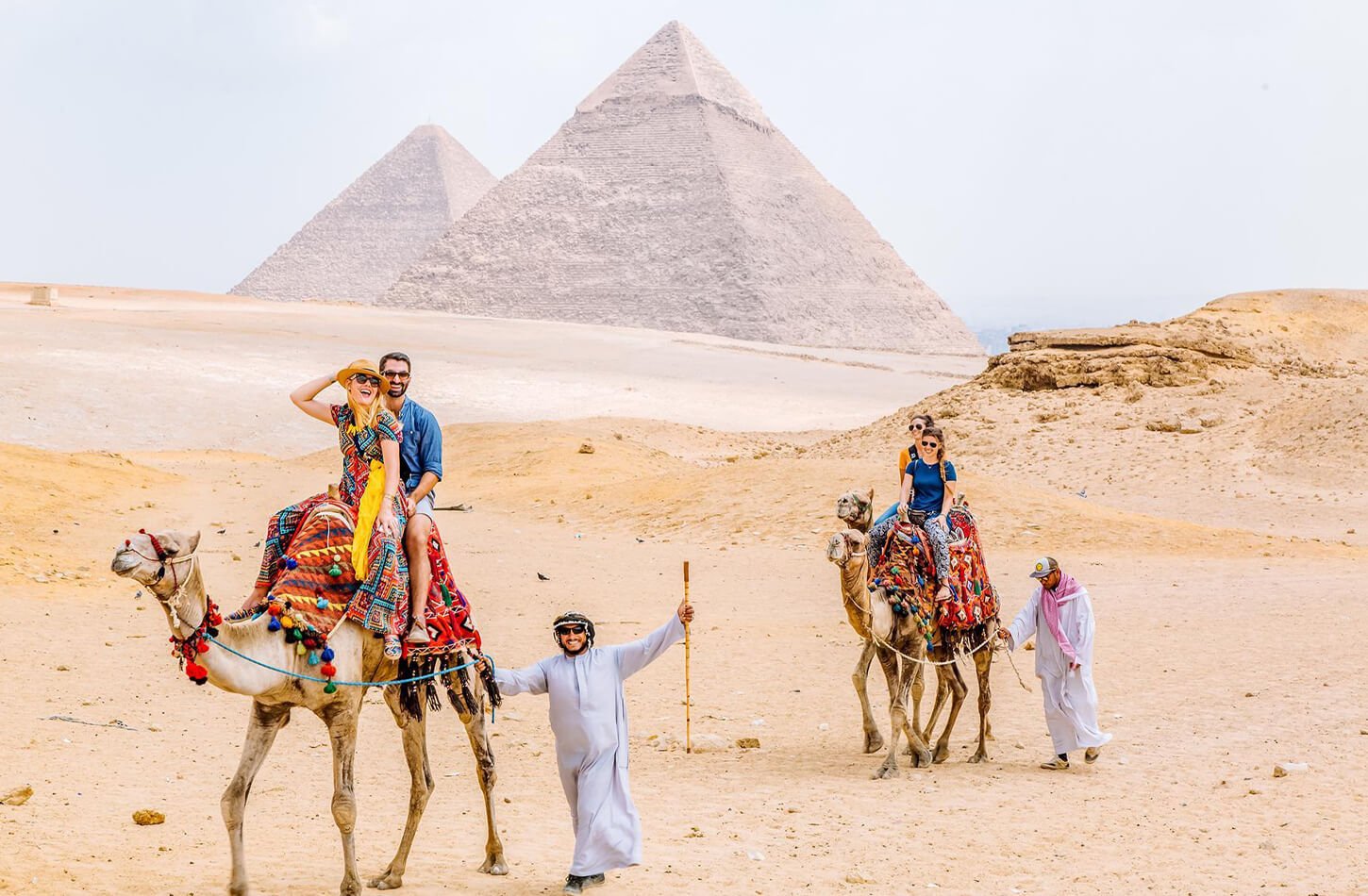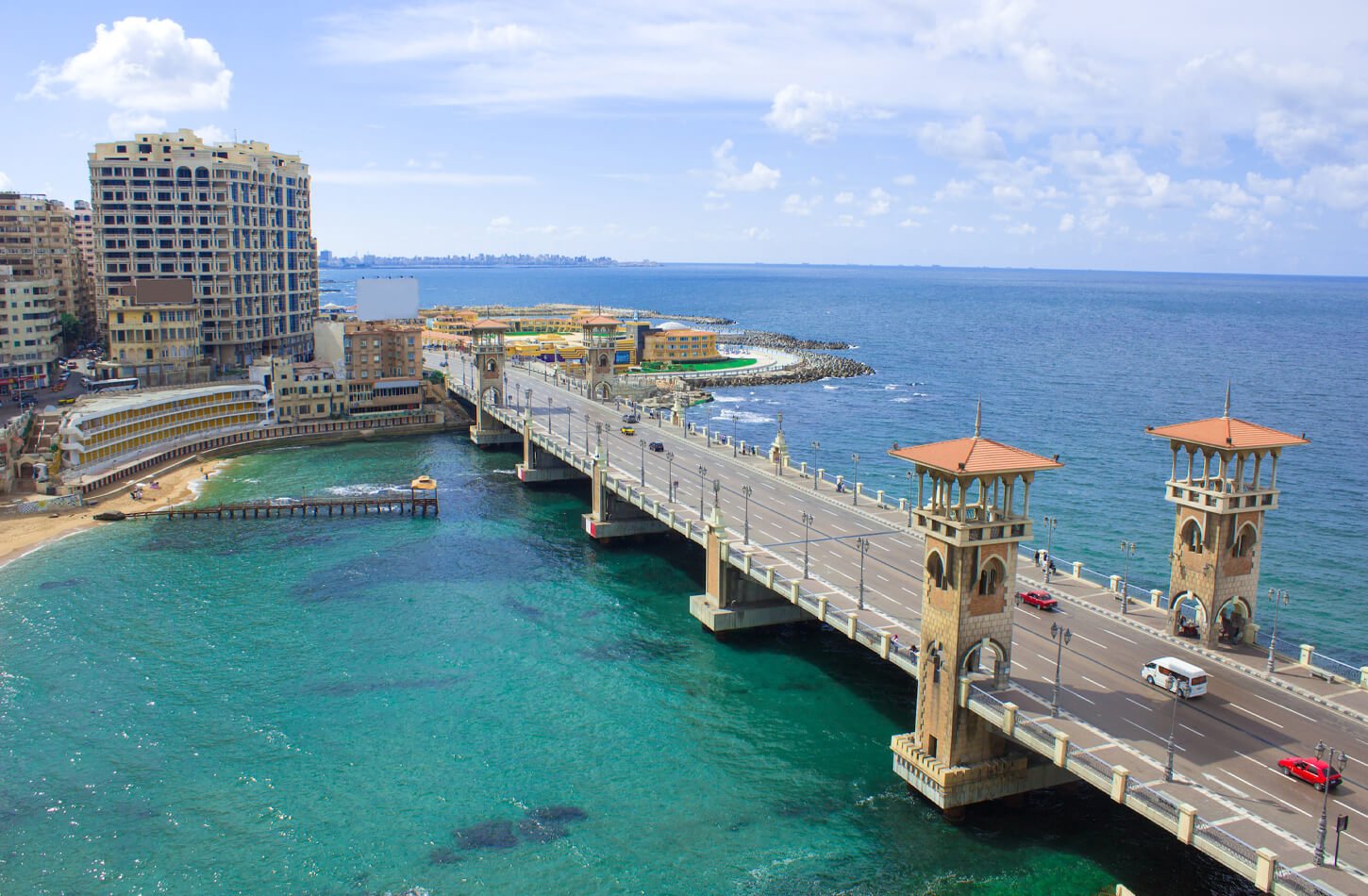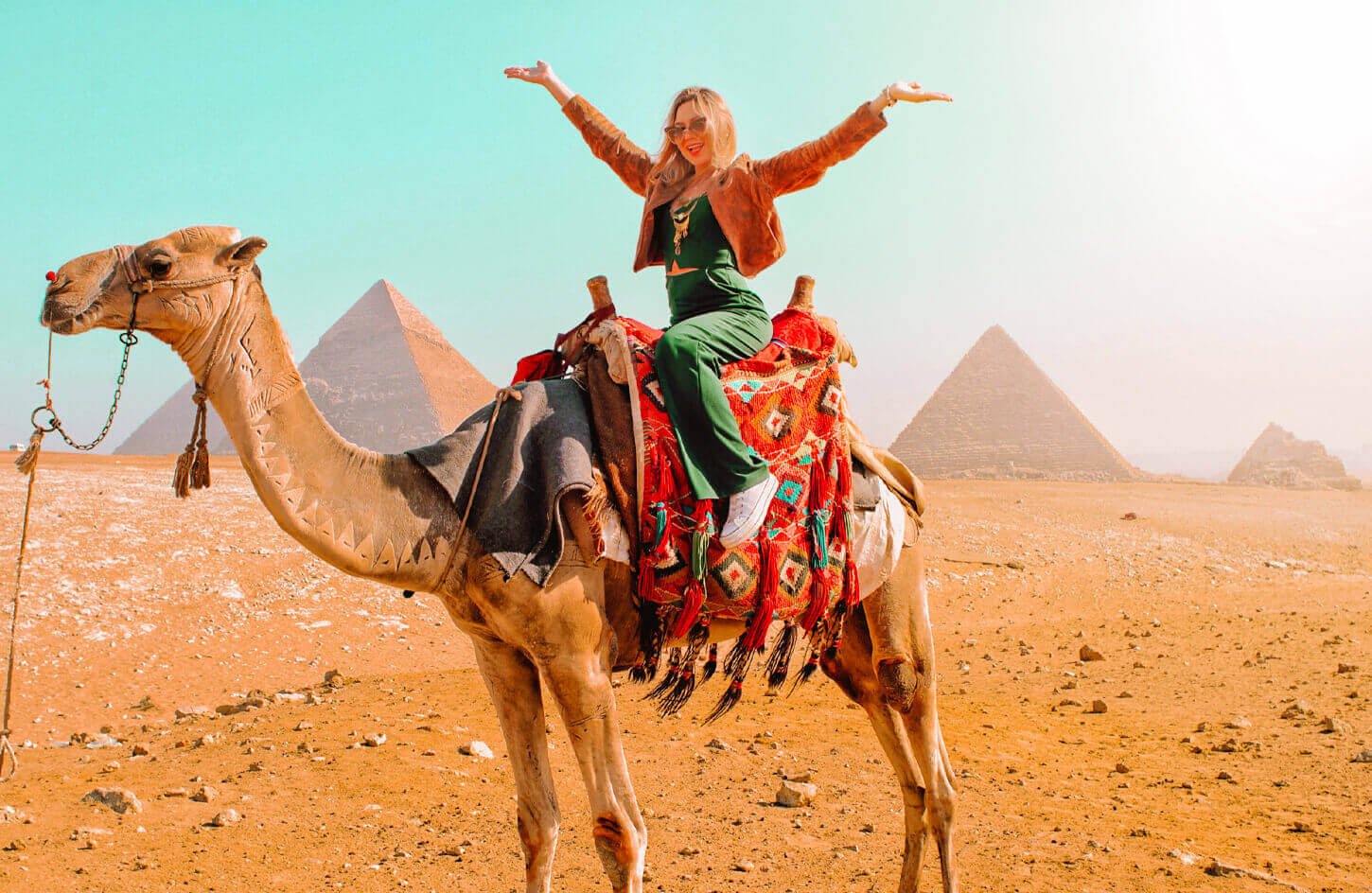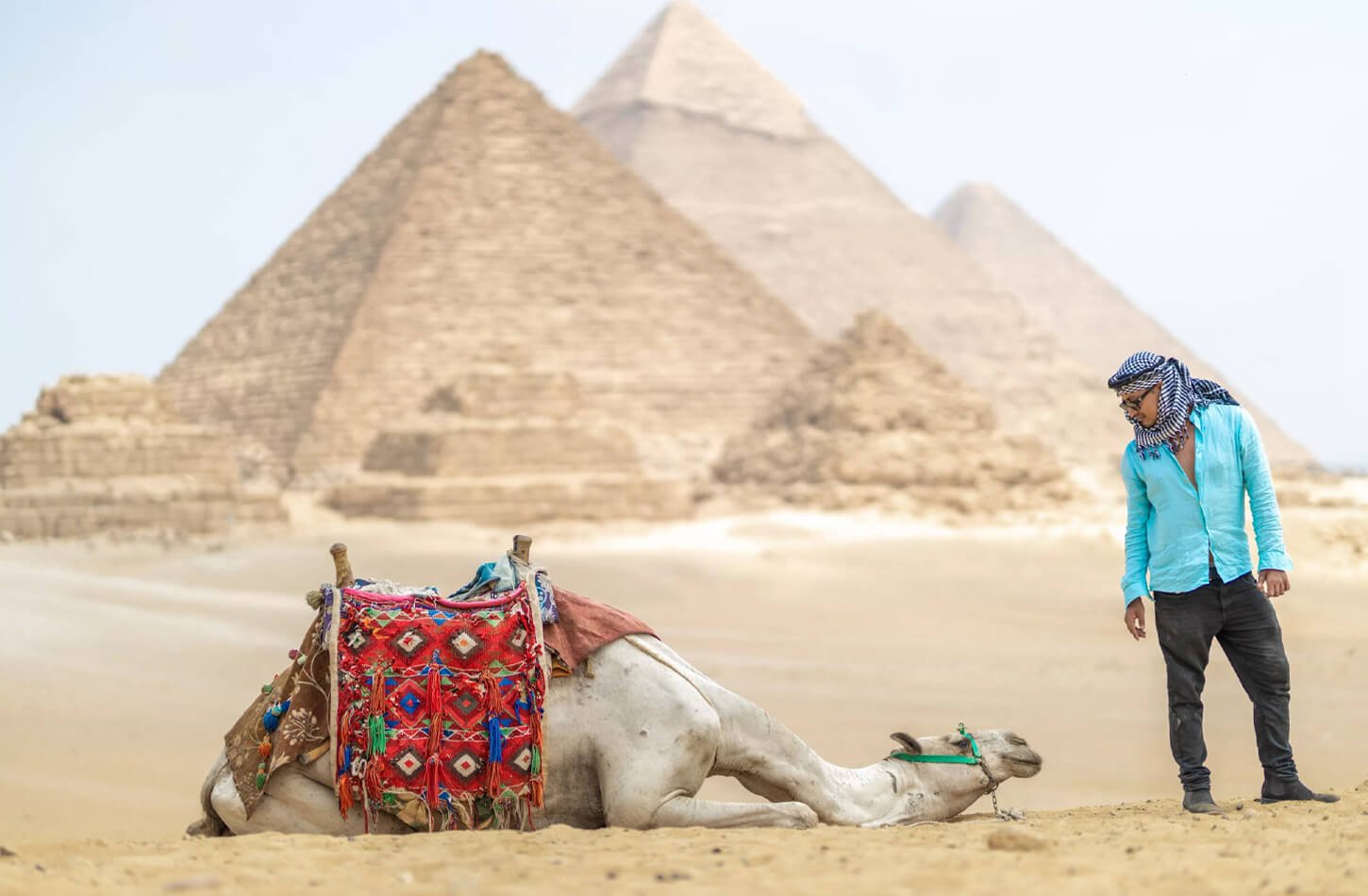Egypt is home to ancient wonders like the Pyramids of Giza. These are the last wonders of the ancient world. You can also see the Thistlegorm wreck, a WWII ship, underwater.
Luxor’s Karnak Temple is grand, and the White Desert’s chalk pinnacles are breathtaking. Each place has its own story.
Visit the Valley of the Kings to see where pharaohs like Ramses VI were buried. Cairo’s Egyptian Museum has treasures from King Tut. The Red Sea’s coral reefs and the Abu Simbel temples are also must-sees.
With over 1,000 archaeological sites, this guide helps you find the best places in Egypt.
Go hiking near the Monastery of St. Anthony or sail the Nile. You can also explore Alexandria’s ancient roots. Every trip shows Egypt’s timeless beauty.
See the Sphinx’s mystery, the Blue Hole’s depths, and the Nubia Museum’s treasures. Egypt is a land where every grain of sand has a story.
Planning Your Egyptian Adventure: What You Need to Know
Start your journey with a 7-10 day itinerary to fully experience Egypt’s top attractions. Begin in Cairo, where the Pyramids of Giza and Egyptian Museum await. Then head south to Luxor and Aswan to explore temples like Karnak and Abu Simbel. For a balanced trip, combine iconic Egypt tourist destinations with lesser-known gems like White Desert or St. Catherine’s Monastery.
Before packing, note these essentials:
- Visa: Obtain a $25 USD tourist visa valid for 30 days upon arrival. Ensure your passport has at least six months validity.
- Transport: Trains from Cairo to Alexandria take 2 hours (under $15 USD round-trip). Flights to Aswan cost $70-120 USD and save time over 1,000-mile drives.
- Money: Exchange currency at banks—1 USD equals ~31 EGP. Avoid street vendors for better rates.
Stay safe and respectful by:
- Wearing modest clothing at religious sites like Khan el-Khalili Bazaar.
- Tipping 5-20 LE for guides or drivers, and 50-100 LE for exceptional service.
- Avoiding unmarked taxis; use certified services like Uber in major cities, though verify routes before departure.
Plan ahead for sightseeing spots like Luxor’s Valley of the Kings—book tickets online to skip lines. Bring sunscreen and two water bottles daily (under $2 USD) for desert regions. Security checks at airports and sites are thorough, expect multiple screenings. With these tips, you’ll navigate Egypt’s wonders smoothly, from the Nile’s timeless beauty to Sinai’s Red Sea reefs.
The Iconic Pyramids of Giza: Egypt’s Ancient Wonders
The Giza Pyramids are a top landmark in Egypt. Built over 4,500 years ago, they show human skill. The Great Pyramid of Khufu, the biggest, has 2.3 million limestone blocks, each up to 15 tons.
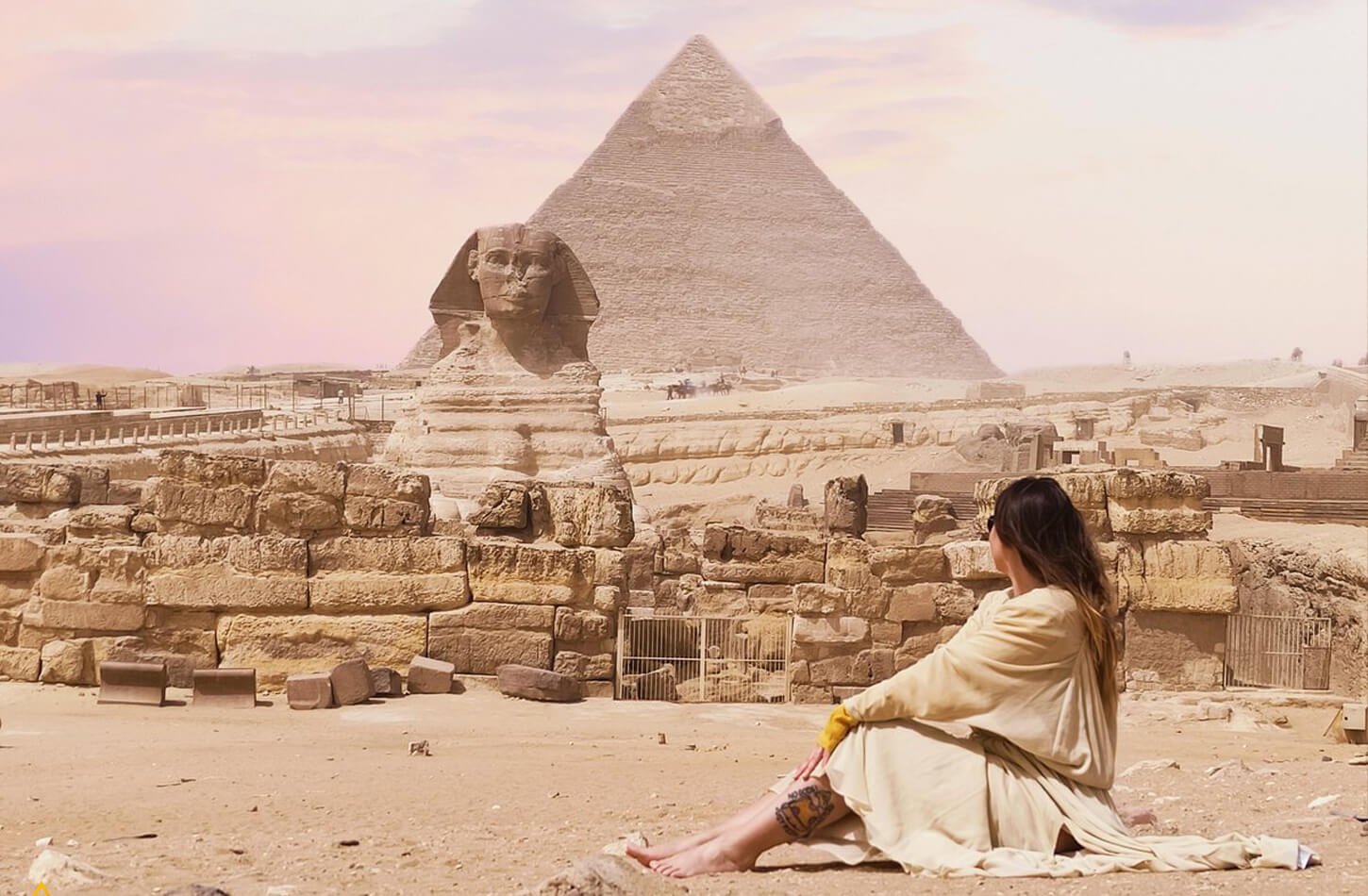
Its alignment with the cardinal directions was precise. Once, its outer casing shone like gold in the sun.
The Great Pyramid of Khufu: Engineering Marvel of the Ancient World
The Great Pyramid was once 481 feet tall. Now, visitors can explore narrow passages and the Grand Gallery. The pyramid’s interior is sparse but its survival is a testament to ancient engineering.
The Descending Passage alone is 100 meters underground. It’s a remarkable feat of ancient engineering.
The Sphinx: Guardian of the Pyramids
The Sphinx was carved from a single limestone outcrop. It faces east, towards the sunrise. At 240 feet long and 66 feet tall, its purpose is still debated.
Some think it links to Pharaoh Khafre’s rituals. Seeing its weathered features and nearby temples helps understand its symbolic role.
Best Times to Visit the Giza Plateau
For the best visit, go at sunrise. The site opens at 8 AM. Early birds get tickets and avoid crowds.
Evening visits are beautiful, but summer is hot. Tip: enter through the Khufu Pyramid’s main gate to skip the Sphinx crowds.
Photography Tips for Capturing the Pyramids
- Angles matter: Shoot from the plateau’s edge for grand scale shots.
- Timing is key: Dawn or dusk highlight texture in the limestone.
- Details count: Zoom in on hieroglyphics near the Sphinx’s paws.
- Drone views (with permit): Capture the site’s layout from above for a modern wonder perspective.
Remember: these monuments are a UNESCO World Heritage Site. Stay on marked paths to respect preservation efforts.
Ancient Temples of Luxor and Karnak
Luxor and Karnak temples are Egypt’s best tourist spots. They are not just places to visit. They are windows into ancient Egyptian beliefs and power. Karnak Temple is the biggest religious building ever made, covering over 100 acres.
Its hypostyle hall has 134 huge columns, with the tallest being 70 feet. Walking through this place feels like entering a pharaoh’s biggest dreams.
- Karnak’s Columns: Marvel at the forest of sandstone pillars adorned with hieroglyphs and solar symbols.
- Luxor Temple’s Festival Legacy: Built by Amenhotep III, this temple hosted the Opet Festival, where statues of gods were paraded between Karnak and Luxor along the Nile.
- Night Illumination: Visit Luxor Temple after dark to see its columns glow under floodlights, revealing intricate carvings.
Visit in spring or autumn for the best weather. Start early to avoid the heat. Explore Karnak’s big courtyards, then head to Luxor Temple across the Nile.
Don’t miss the Avenue of Sphinxes, a 2-mile path linking the two sites. A Nile cruise adds to the experience, offering calm views of the river and temples. These sites, along with Abu Simbel and the Valley of the Kings, make Luxor the “world’s greatest open-air museum.”
Exploring the Valley of the Kings
The Valley of the Kings is a must-see in Luxor. It’s filled with over 60 tombs. Each one tells a story of ancient Egypt’s burial rituals.
This place is a UNESCO site. It was used from 1539–1075 BC. It’s famous for Tutankhamun’s treasures, a top sight in Egypt.
Tutankhamun’s Tomb: A 1922 Breakthrough
In 1922, Howard Carter found KV62. It changed how we study ancient history. You can see over 5,000 artifacts, including King Tut’s golden mask.
The tomb is small but famous. Its walls show the pharaoh’s journey to the afterlife.
Must-Visit Royal Tombs
- Seti I’s Tomb (KV17): It has long corridors with 1,000+ square meters of wall paintings. These show the Amduat, an ancient funerary text.
- Ramses VI (KV9): It has bright scenes from the Book of Gates. The burial chamber is 20 meters high.
- Thutmose III (KV47): It’s a hidden gem. It has vibrant hunting and agricultural scenes in its pillared burial hall.
Plan Your Visit Wisely
Only 10 tombs are open each day. You need a standard ticket (750 EGP) to enter. Extra fees apply for special tombs like Seti I (2,000 EGP) or Tutankhamun (700 EGP).
Get there early to avoid crowds. Wear good shoes because some tombs have steep paths. The Luxor Pass can help you save money by giving you access to more sites, including the Valley.
Top Attractions in Egypt You Can’t Miss
Exploring Egypt’s ancient wonders is a must. These must-visit places in Egypt offer unforgettable experiences. From museums to temples, they make your journey through time complete.
Egyptian Museum in Cairo
Visit the Egyptian Museum to see over 120,000 artifacts. You’ll see Tutankhamun’s gold treasures and the Royal Mummy Room. Don’t miss the 43-meter-long solar ship of Khufu.
The Grand Egyptian Museum near Giza will soon open in 2024. It will have a 11-meter-tall Ramses II statue.
Abu Simbel Temples
See the twin temples carved into cliffs by Ramses II. They were moved in the 1960s to save them from Lake Nasser. Twice a year, sunlight shines on the sanctuaries.
Plan your visit for the “Sun Festival Spectacle” on February 22 and October 22.
Sailing the Nile River
Experience the Nile’s magic on a felucca sailboat or a luxury cruise. Cruise between Aswan and Luxor to see Karnak’s 134-column hall and Luxor Temple’s 20-meter obelisk.
Choose a route with stops at Edfu’s Horus temple and Kom Ombo’s double temple. This will give you a deeper dive into history.
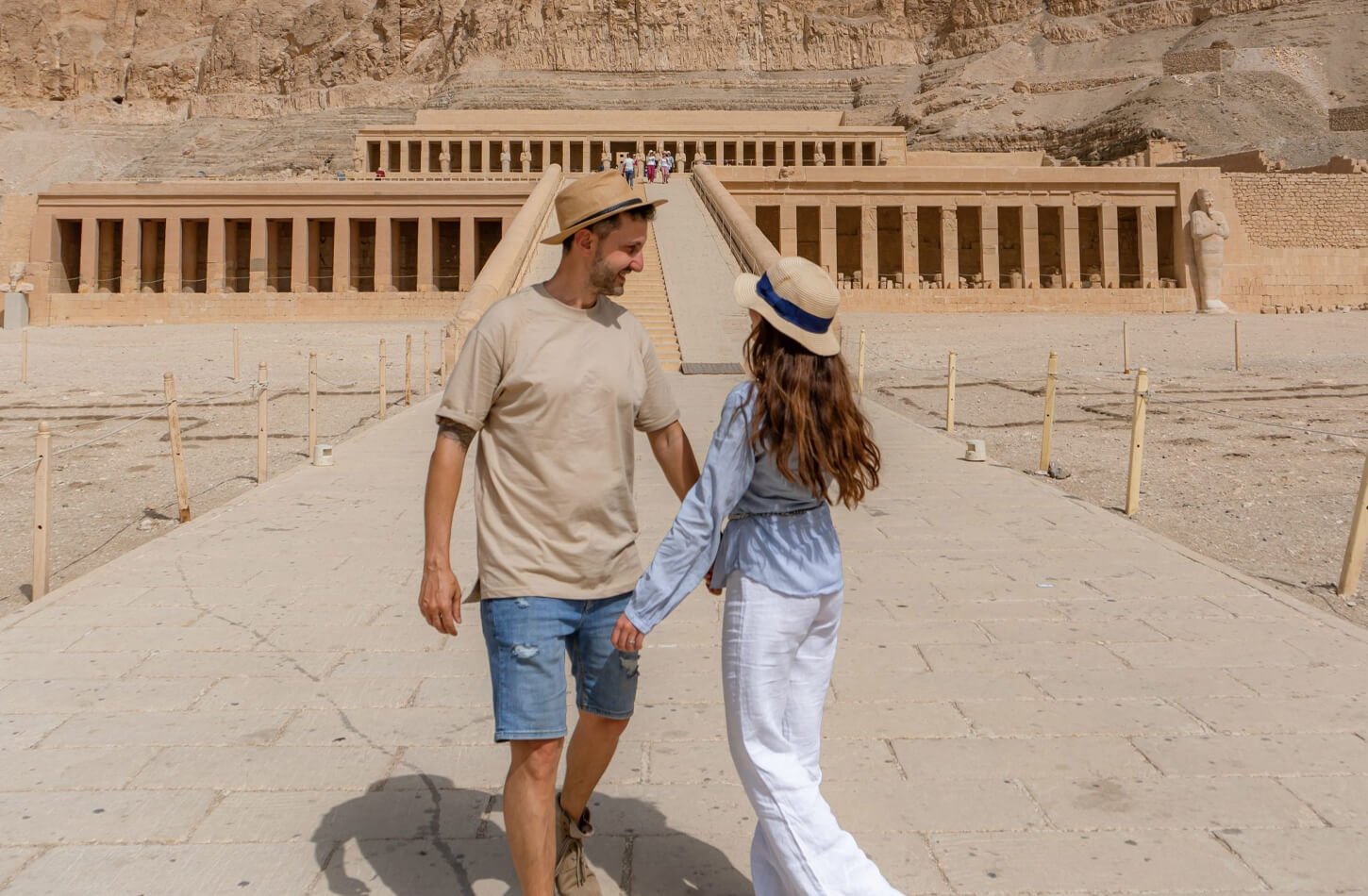
Islamic Cairo and Khan el-Khalili Bazaar
Wander Islamic Cairo’s 1,400-year-old mosques, like Al-Azhar. Explore Khan el-Khalili’s 14th-century market. Browse 200+ shops selling spices, textiles, and pharaonic souvenirs.
The maze-like alleys and courtyard shops make it the Middle East’s largest open-air bazaar.
Discovering Alexandria’s Mediterranean Charm
Alexandria’s coastal charm makes it a top spot in Egypt. It was Cleopatra’s Mediterranean port. Here, ancient history meets seaside vibes. Let’s explore its best attractions:
- Bibliotheca Alexandrina: This modern library has millions of books and art. It’s a cultural dive into history.
- Qaitbay Citadel: This 15th-century fortress stands where the Lighthouse of Alexandria once was. It has stunning sea views.
- Catacombs of Kom El Shoqafa: Explore underground tombs with Egyptian, Greek, and Roman art. See over 300 mummies and sunburst motifs.
- Corniche: Walk this 10-mile waterfront. Cafes and seafood restaurants line the shore. It’s perfect for sunrise or sunset walks.
- Pompey’s Pillar: This 25-meter Roman column is a silent witness from the past.
Visit Montazah Palace’s gardens or a historic café. Spring or fall is the best time to visit. Don’t miss the Royal Jewelry Museum or Alexandria National Museum. Alexandria’s history and Mediterranean vibe make it a must-see in Egypt.
Natural Wonders of Egypt Beyond the Pyramids
Egypt’s ancient wonders are famous, but its natural beauty is just as stunning. Explore the Red Sea’s colorful underwater world, see chalk formations shaped by time, or find peace in an untouched oasis.
Begin your underwater adventure at the Red Sea Coral Reefs. These reefs are among Egypt’s top sights, home to over 1,000 fish species. Dive sites like the Blue Hole in Dahab and the Thistlegorm wreck are must-sees. Sharm El Sheikh and Hurghada offer clear waters for diving or snorkeling, great for all skill levels.
- Top Dive Sites: Blue Hole, Thistlegorm Wreck, Ras Mohamed National Park
- Best for: Marine life spotting, night dives, and coral gardens
On land, the White Desert National Park is a dream come true. It has chalk-white formations that look like icebergs. Located near Bahariya Oasis, it’s best seen on a 4×4 safari. Stay overnight to see the desert change colors at sunset and camp under the stars.
Lastly, visit Siwa Oasis, a desert paradise with olive groves and salt lakes. It’s a place of ancient history and Berber culture. Stay in eco-lodges run by locals, enjoy the Shali Fortress, and relax by salt lakes for a peaceful getaway.
These best tourist attractions in Egypt show Egypt’s beauty beyond its ancient sites. Whether you dive, hike, or explore culture, these spots make every trip special. Plan your visit from October to April for the best experience.
Immersive Cultural Experiences in Modern Egypt
After seeing Egypt’s ancient wonders, find out how modern culture adds to your trip. Egypt’s modern side is alive in its vibrant traditions and new city life.
- Sunset Felucca Rides: Sail the Nile in Aswan on a traditional felucca. These boats give you calm views of Elephantine Island and desert cliffs at sunset. It’s a top thing to see in Egypt.
- Al-Azhar Park: Explore Cairo’s green space, once a garbage dump, now a 30-acre park. Walk through terraced gardens and see the city from above. It shows how cities can change.
- Sufi Whirling Shows: See Tannoura dances in Cairo. They mix dance and music, with colorful skirts moving to traditional beats. It’s a live show of Sufi culture.
- Culinary Workshops: Learn to make koshari or mulukhiya in cooking classes. Visit Bab Al-Louq spice market for fresh ingredients for your dishes.
- Nubian Village Visits: In Aswan, see homes with dome-shaped roofs. Locals show off crafts like pottery and share folk music. It’s a chance to see 4,000-year-old traditions.
- Contemporary Art Galleries: Check out Menegildo Tagliapietra in Cairo and San Stefano in Alexandria. These galleries feature modern Egyptian artists. Have coffee at Abu El Sid afterwards.
Be respectful: Wear modest clothes when visiting mosques or villages. Bargain nicely in markets. These moments help you connect and make your trip special. Modern Egypt’s heart is in its people, art, and daily life. It connects the old with the new.
Conclusion: Making the Most of Your Egyptian Journey
Egypt is full of amazing places to see, from ancient wonders to peaceful oases. You can explore the Pyramids in Cairo or relax in Siwa Oasis. For a week, see the Pyramids, the Egyptian Museum, and take a Nile boat ride.
Stay longer to see Luxor’s temples or dive in the Red Sea. Visit Abu Simbel early to avoid crowds. This way, you’ll see Ramses II’s statues in peace.
Make sure to balance sightseeing with rest. After seeing Luxor’s Karnak Temple, relax in Aswan’s gardens or swim in Sharm El Sheikh. Nile cruises and places like Bahariya’s springs offer fun and wellness.
Remember to pack light clothes for the cooler months and have small bills for tips. Use ride apps and the Cairo Metro for easy travel.
Egypt’s history spans over 4,500 years, with UNESCO sites like Philae Temple. The new Grand Egyptian Museum will reveal more secrets. From spices in Khan el-Khalili to Nubian crafts, every moment is a connection to the past.
Read our Related Article:

